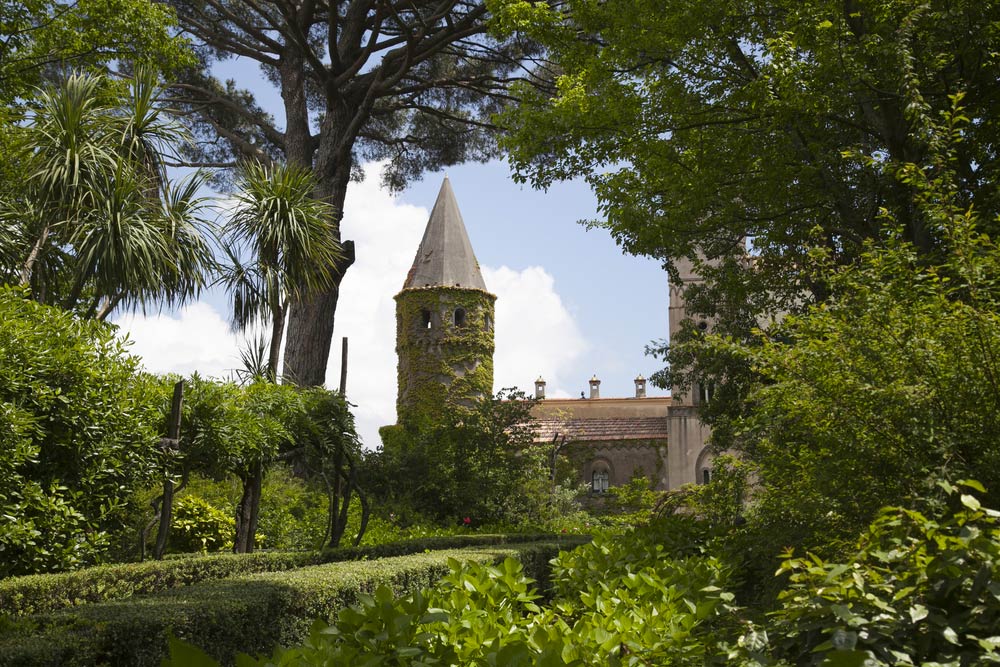What to see and where to go in Ravello

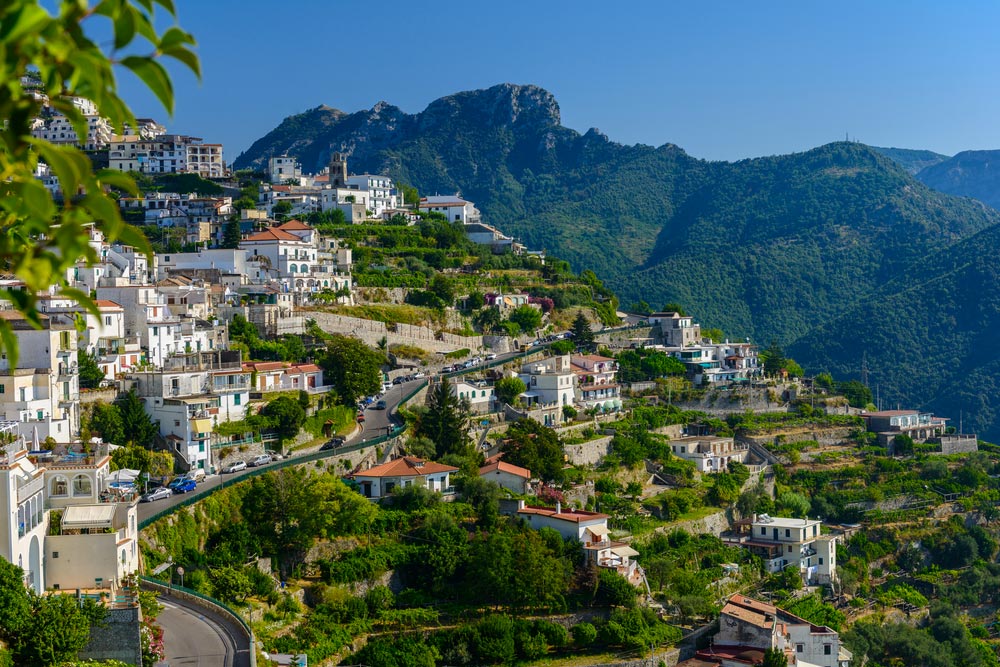
Ravello is probably one of the most scenic towns on the whole Amalfi Coast. It looks out onto the sea from the slopes of the Monti Lattari, on what is almost a natural terrace, with the power to charm anyone visiting it through the years. There are many scenic viewpoints from which to admire the breathtaking panoramas of the Amalfi Coast and there are just as many unmissable historic monuments that make Ravello a tourist destination renowned all over the world.
Ravello offers a wide number of opportunities that cater for all types of holidays. It is rich in history and monuments for those looking for artistic and cultural heritage, it offers a number of festivals that will attract anyone seeking for lively events, there is no shortage of amazing beaches for those craving a little seaside life and even trekking opportunities deep within nature, for the thrill-seeking adventurer.
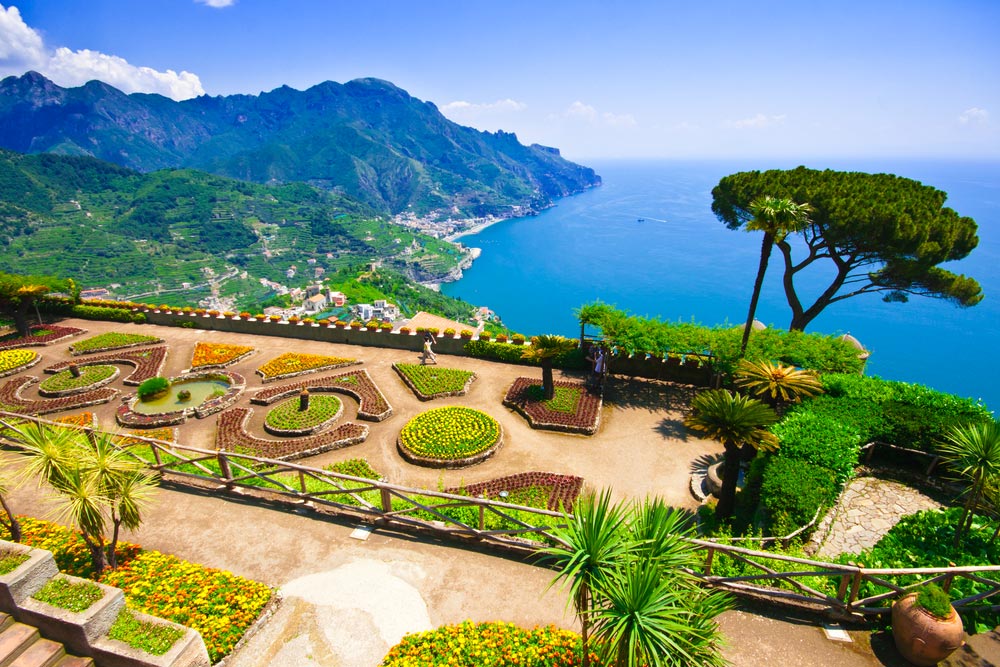
The first historical mentions of Ravello date back to the IX century, when the Amalfi State took charge of all towns and villages in the area. But the actual town was built by settlers a few centuries earlier, probably in Roman times. When some aristocrats from the Amalfi Republic rebelled against the Doge and took up residence in Ravello (around 1000AD), the town began to thrive, also due to the presence of well-known wool spinning artisans.
In the XI century, Ravello attempted to gain independence from Amalfi by building a town wall and electing its own duke. After a number of invasions at the hands of foreign troops (from the Normans to the French) and a time of pestilence which sent the town into decline, in 1818 the diocese of Ravello was suppressed and incorporated into the archdiocese of Amalfi.
The town’s luck turned again in the XIX century, when Ravello was discovered by a number of artists and scholars, whom visited its sites and fell in love with it. Since then, it has gained its reputation for a destination for cultural holidays and much more.
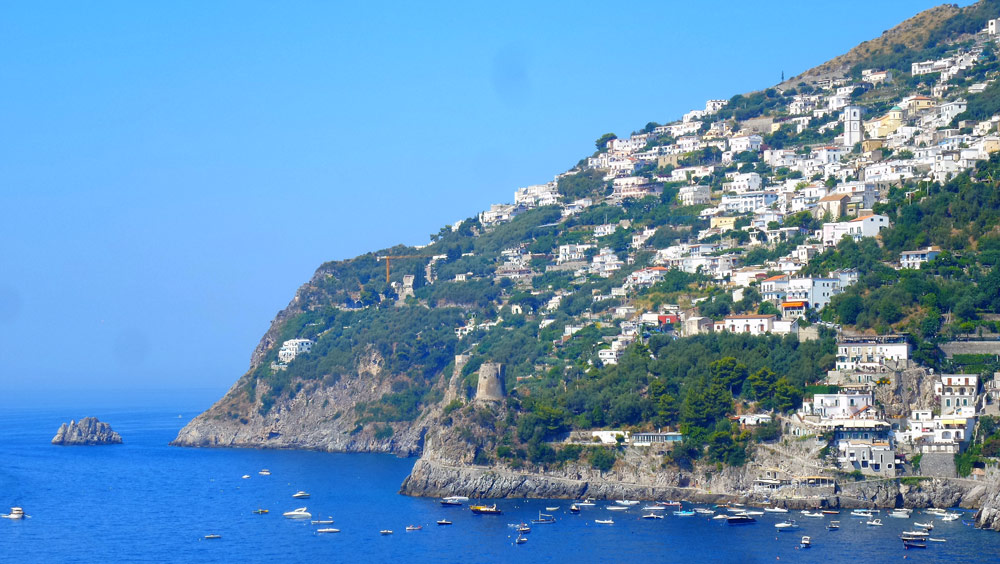
Walking in Ravello, many monuments capture the onlooker’s attention due to their art and history. Two of the main sites are Villa Rufolo and Villa Cimbrione, aristocratic residences of the families that lived in Ravello through the centuries. Villa Rufolo was built in the XIII century and its towers reflect the various artistic influences of the town, with an Arab-Sicilian-Norman style. One unmissable spot is Richard Wagner’s Terrace, where in 1880 the famous composer had the inspiration for his famous musical drama Parsifal. For this very reason, a Wagner Festival is held every year in the scenic location of Villa Rufolo, attracting large crowds of concert-goers.
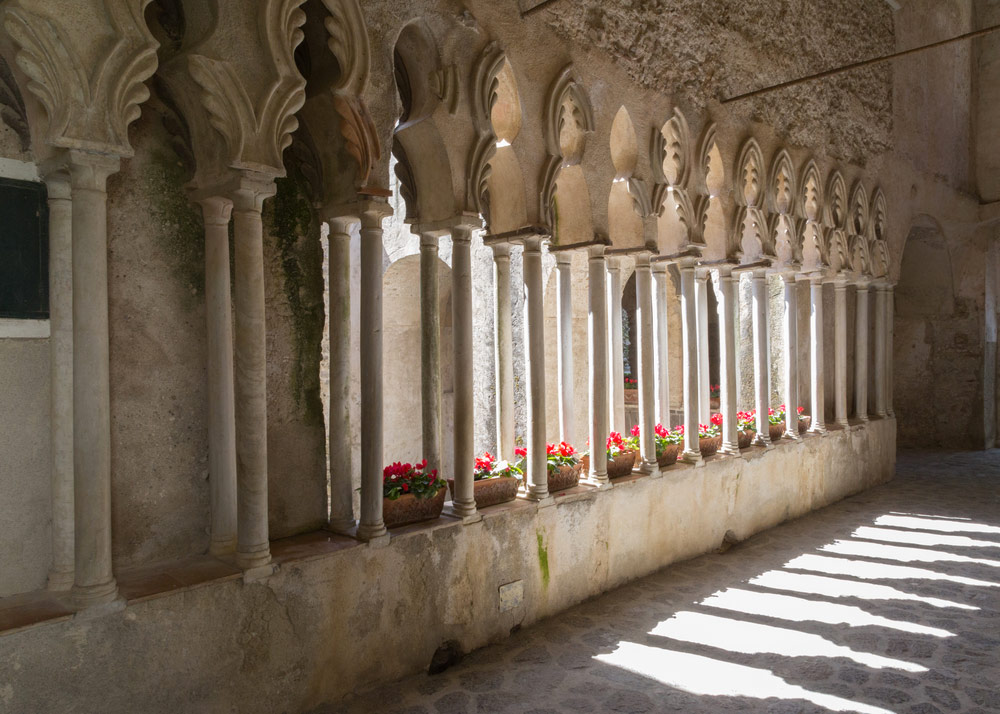
Amongst the religious monuments adorning the town, the Duomo (built in 1086 by order of the first Ravello bishop, Orso Papirio) is a real must see, together with the museum which contains a number of remarkable and delightful pieces like the “Bust of Sigilgaida Rufolo”, one of the most relevant western art sculptures from the XIII century. Even more ancient is the San Giovanni del Toro church, built in 975.
Another interesting visit is to the Coral Museum, offering a collection of precious artefacts in coral, engraved mother of pearl and shells. One characteristic of the museum is that the exhibits can be traced back through the history of Ravello, from the Romans up to the present day.
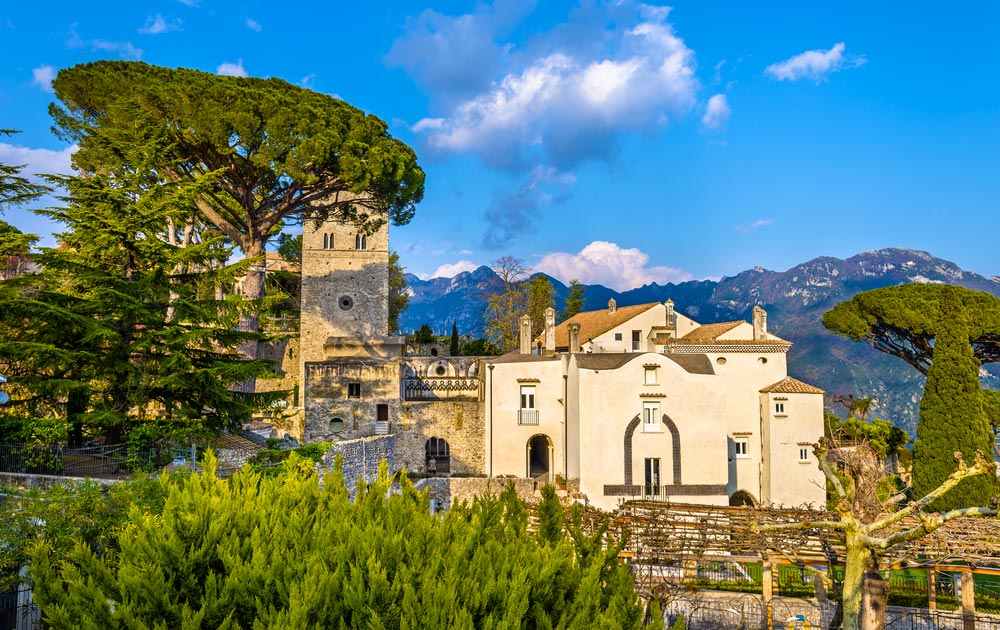
Pages and pages could be written on the beauties of Ravello, attempting to describe its charms to all those wishing to visit and discover it. But the best way to convince someone that Ravello is a destination not to be missed, is to leave it to the great artists that visited during the centuries and wrote about it, its scenic viewpoints, the perfect climate, the people, the sea, the mountains and all the emotions that this town regaled them with.
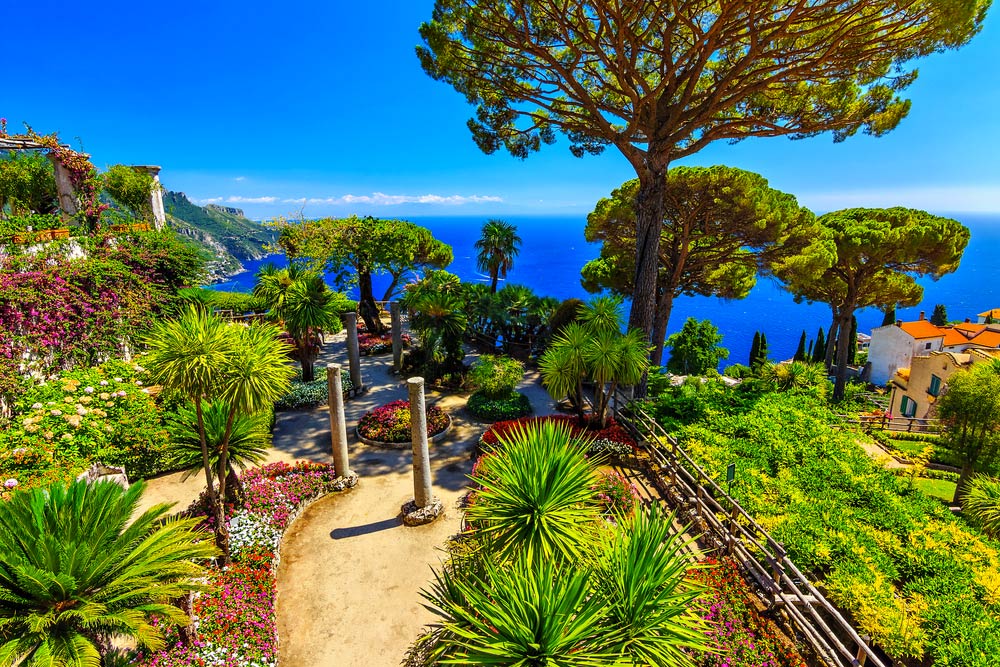
Giovanni Boccaccio (1313 – 1375), writer: “Opinion hath made it famous for long time, that the Seacoast of Rhegium to Gaieta, is the onely delectable part of all Italy, wherein, somewhat neere to Salerno, is a shore looking upon the Sea, which the inhabitants there dwelling, doe call the coast of Malfy, full of small Townes, Gardens, Springs, and wealthy men, trading in as many kindes of Merchandizes, as any other people that I know. Among which Townes, there is one, named Ravello, wherein (as yet to this day there are rich people) there was (not long since) a very wealthy man, named Landolpho Ruffolo…”
“Decameron”, Second Day, Fourth Novell, 1350
Leandro Alberti (1479 – 1552), historian, philosopher, theologian: ”Perched atop the Monte is Rivello town, she that though not ancient, is well constructed and easily may be amongst the first and most noble cities of the Naples Realm”
“Descrittione di tutta Italia, nella quale si contiene il sito di essa, l’origine et le Signorie delle Città et delle Castella”, 1550
Karl Eduard Ferdinand Blechen (1798 – 1840), landscape painter: ”..and we walked the slopes up until Ravello, and there too we drew..”
“The Amalfi Sketchbook”
Richard Wagner (1813-1883), composer: “Wednesday 26 May. Quiet breakfast and horse ride up at Ravello; words cannot express the beauty. In Ravello we found Klingsor’s garden…Lunch in the villa, then coffee with the administrator of Mister Reed, whose wife, a Swiss lady, remind us of Vreneli and is very pleasant in her severity. We rode up Via Santa Chiara as far as the small pavilion (in my opinion, the view from up there is the most beautiful of all). We stopped for a break and song by Peppino. The way down was astounding and the beautiful evening on the terrazza with conversation on the stars that shine bright above us, and the moon which, as is being said, stares at us “with blown up cheeks and a befuddled face”.
From the Diary of Cosima Wagner, May 26, 1880
Ferdinand Gregorovius (1821 – 1891), historian and medieval scholar: ”And so we entered in the ancient Ravello and all of a sudden, amongst these wild rocks, we found ourselves standing in awe of a moorish town, with its tower and houses covered in breathtaking arabesque engravings, offering a truly Arabic facade. It is built with black tuff, isolated and abandoned in the greenish desert of the mountain. Here, the rest of the world has disappeared; nothing else is present but trees and rocks. Below us, at an unreal distance, the amaranth sea. In the gardens, tall and black towers, bizarre architectures in the moorish style with arabesque decorations in ruins above windows and above the small columns adorning the arches. In the market, near the church, there stands an ancient moorish residence, itself built in black tuff and covered in arabesque egravings. Two peculiar columns finish it off at each angle. The roof is lain on a vaulted cornice. This building is known as the “Moorish Theatre”. It was without doubt one of the palaces of the ancient lords of Ravello. Because this town, deserted today, was one a flourish pillar of Amalfi and counted thirty six thousand souls. Wealthy families instilled here that luxury that would be created from the union of the East with the Saracens of Sicily.”
“Wanderjahre in Italien”, 1872
Andrè Gide (1869 – 1951). writer, Nobel prize winner: “One morning, after I had stripped, I looked at myself; my thin arms, my stooping shoulders, which no effort of mine could keep straight, but above all the whiteness of my skin, or rather its entire want of color, shamed me to tears. I dressed quickly and, instead of going down to Amalfi as usual, I turned my steps towards some mossy, grass-grown rocks, in a place far from any habitation, far from any road, where I knew no one could see me. When I got there, I undressed slowly. The air was almost sharp, but the sun was burning. I exposed my whole body to its flame. I sat down, lay down, turned myself about. I felt the ground hard beneath me; the waving grass brushed me. Though I was sheltered from the wind, I shivered and thrilled at every breath. Soon a delicious burning enveloped me; my whole being surged up into my skin. We stayed at Ravello a fortnight; every morning I returned to the same rocks and went on with my cure”.
“The Immoralist”, 1924, on a stay in Ravello back in 1902
Edward Morgan Forster (1879-1970): “Ravello is a delightful place with a delightful little hotel in which we met some charming people.”
On a stay in Ravello, in 1901
David Herbert Lawrence (1885 -1930), writer and poet: he visited Ravello in 1926 and 1927 and, inspired by the scenery that surrounded him, he devoted himself to writing “Lady Chatterley’s Lover”.
Maurits Cornelis Escher (1898 – 1972), dutch graphic artist and etcher: he visited the Amalfi Coast on numerous occasions, sketching views of Ravello and staying in town at the Toro Hotel, where he met Jetta Umker, his future wife.
Greta Garbo (1905-1990), actress: in 1938, she lived a brief but intense love story with the musician Leopold Stokowski (1882 – 1977) in the Villa Cimbrone.
Jacqueline Kennedy (1929-1994): In August 1962, she spent a three week holiday in Ravello, with daughter Caroline and son John John, as guests of the Duke of Sangro in the ancient Villa Episcopio.
Gore Vidal (1925-2012), writer: “Twenty five years ago I was asked by an American magazine what was the most beautiful place that I had ever seen in all my travels and I said the view from the belvedere of the Villa Cimbrone on a bright winter’s day, when the sky and the sea were each so vividly blue that it was not possible to tell one from the other”.
